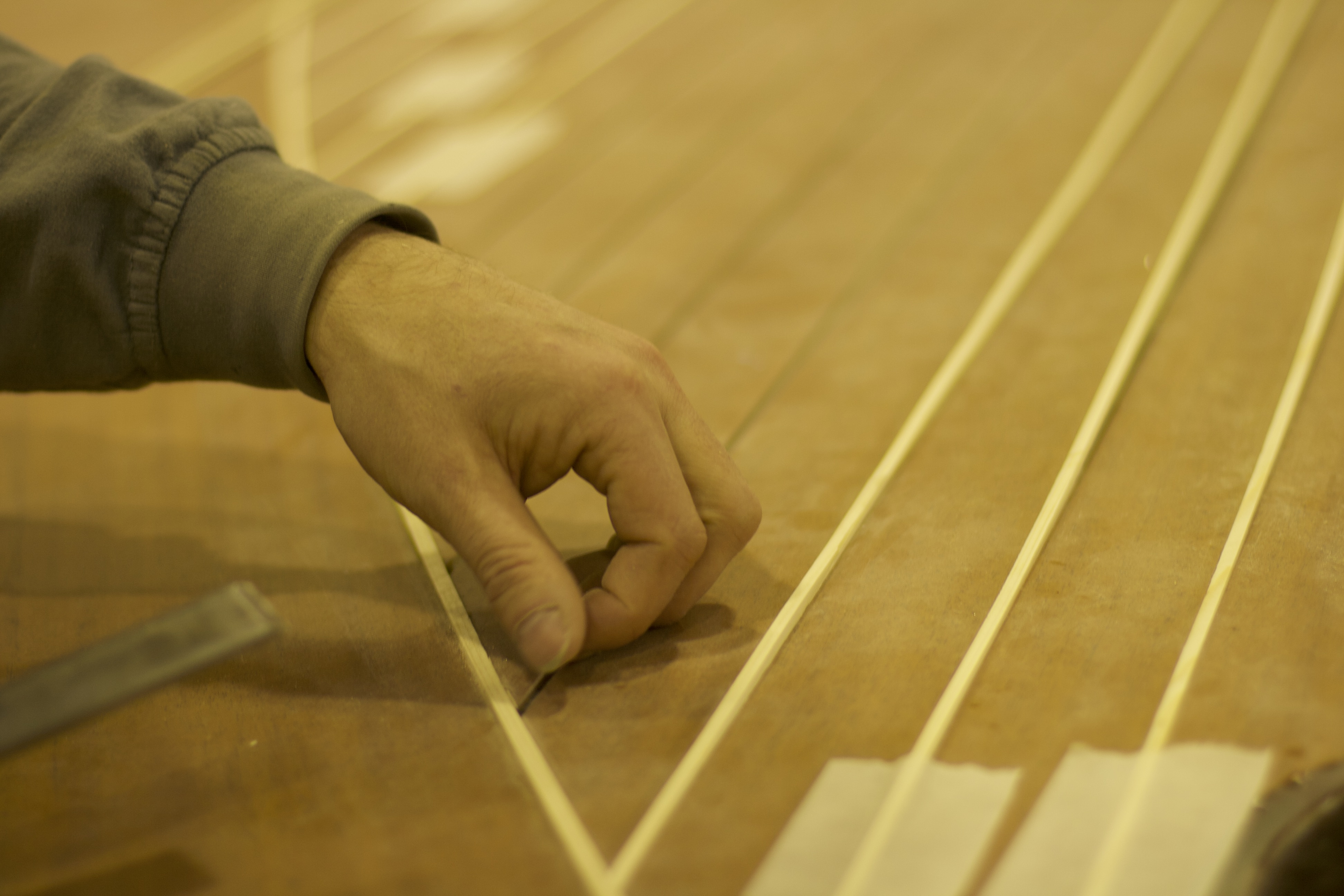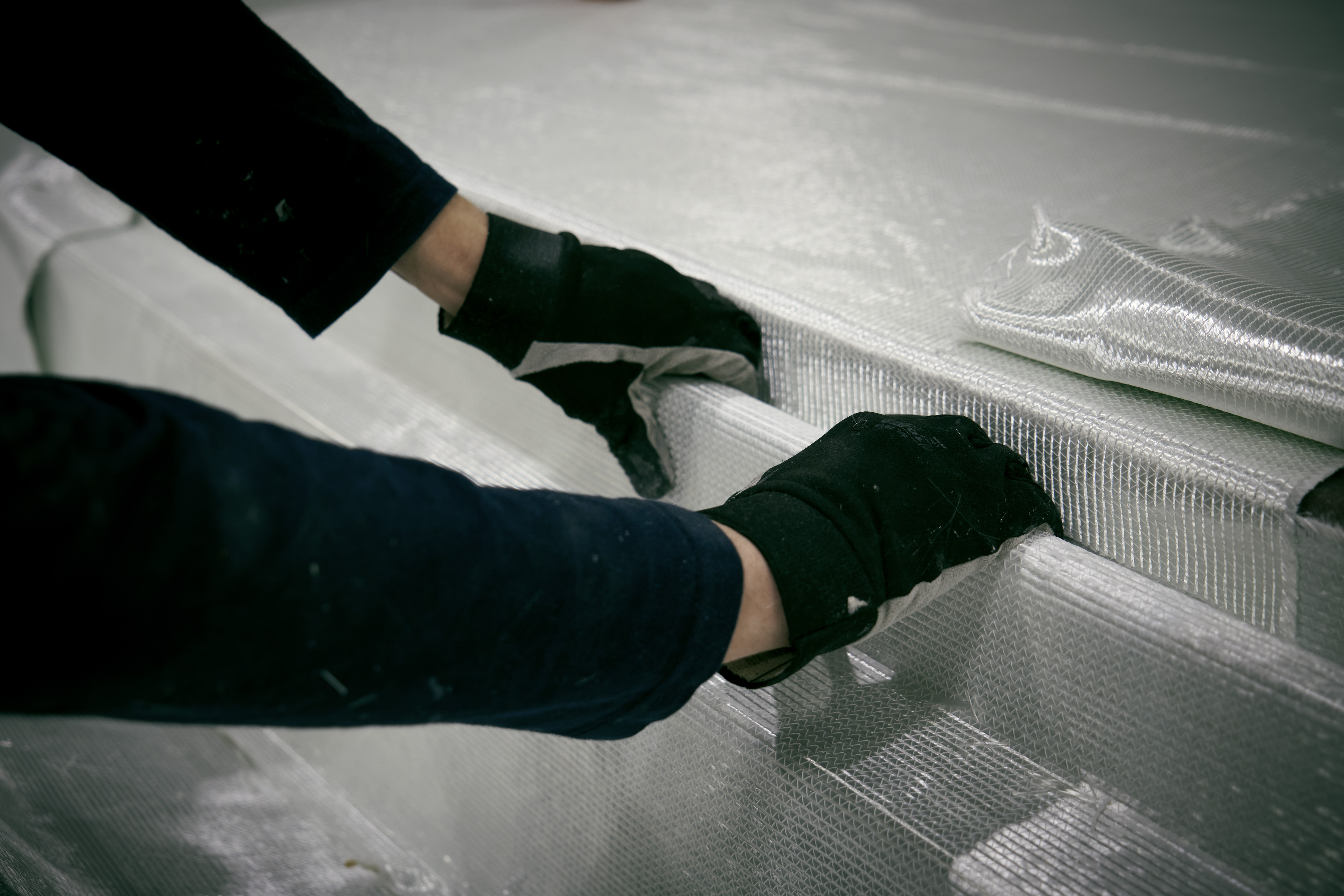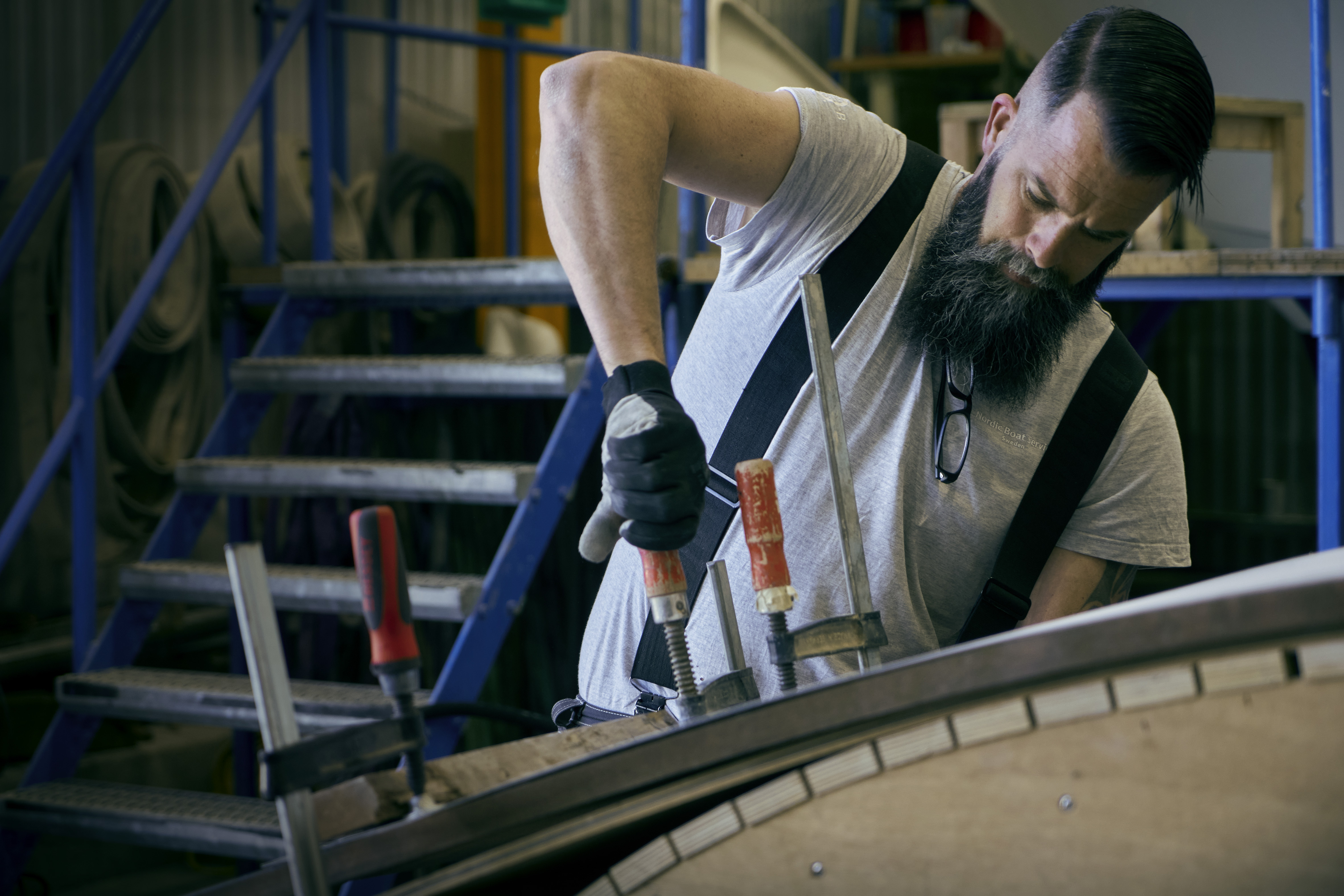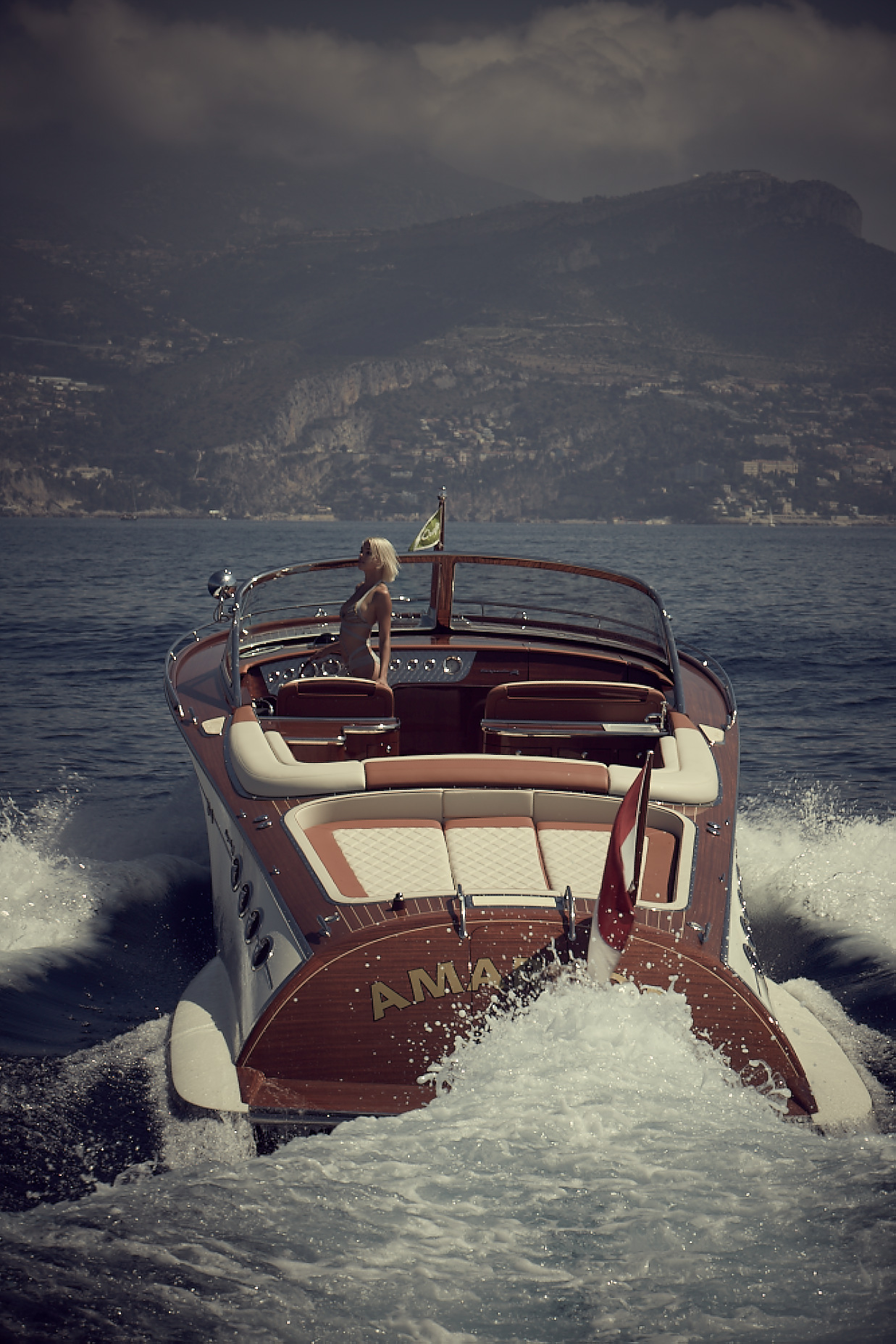Journal #30
A Letter From Our Master Builder: On Wood, Fibreglass & the Beauty of Blending Both
When someone first steps aboard a Torpedo, their hand often lingers on the mahogany – the gleaming coamings, the deck panels glowing under twenty coats of varnish. It’s an instinctive reaction.
Words by: Johan Hallén

Mahogany has long been the hallmark of classic day cruisers, a visual and tactile reminder of a golden age of yachting. And yet, beneath that lustrous surface lies something entirely modern: a carefully engineered composite hull made using vacuum-infused fibreglass.
It’s a choice that surprises some. But it is one we have made deliberately – not in rejection of tradition, but in deep respect for it. We believe that by embracing modern materials where it matters most, we are able to preserve the soul of classic boatbuilding while delivering a better, more sustainable, and more enjoyable ownership experience.
The Limitations of Solid Wood – and Why We Chose Fibreglass
Wooden boats are undeniably beautiful. They are also heavy, temperamental, and high-maintenance. Even the best timber is affected by shifts in temperature and humidity. Over time, this can cause movement in the hull and compromise structural precision. A solid-wood boat also weighs significantly more than its composite equivalent, which means it requires more power to accelerate, more fuel to cruise, and more effort to helm.

There is also the reality of ongoing care. Wood absorbs water. It expands, contracts, swells and cracks. Preserving it requires constant attention – annual stripping, sealing, sanding and varnishing – and even then, exposure to salt and sun will eventually take its toll. Mahogany may be poetic, but left untreated under a Mediterranean sky, that poetry fades fast.
This is why we build our superstructure in composite. Fibreglass gives us the strength we need without the excess weight, allowing the Torpedo to accelerate faster, ride more efficiently and respond more nimbly to the helm. It gives us a hull that is exact to the millimetre, so every joinery detail remains precise. And it gives us durability – immunity to moisture ingress, resistance to osmosis, and stability in all climates – without ever asking the owner to compromise on aesthetics.


Even sustainability plays a part. The core we use are derived from post-consumer plastics and are fully recyclable. Every hull is cured here in Visby using 100% renewable electricity. And one day, when a Torpedo has completed her service, that same hull can be broken down and returned to useful material – a quiet reversal of the same craftsmanship that built her.
Veneer, Not Imitation
Of course, technology alone is never the point. After the composite shell is formed, we spend weeks hand-laying narrow, book-matched strips of real West African mahogany across the deck and coamings. This is not imitation. It is real wood, responsibly cultivated and carefully shaped, then finished with twenty coats of varnish until the grain seems to shimmer from within.


The difference is that this wood is applied only where it should be – where it adds warmth, beauty, and character. It does not bear the burden of structural load, nor does it face the hardship of open water. It simply does what great materials should do: it stirs emotion.

Fair winds,
Johan Hallén
Chief Master Builder, J Craft Boats
